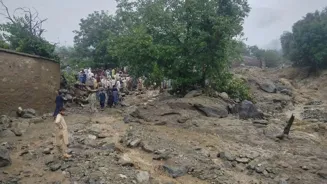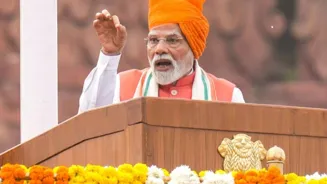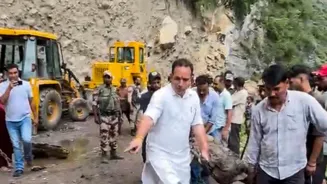Since June 26, more than 360 people in Pakistan have died in rain-related accidents, the majority being women and children. Local officials claim that the majority of the most recent killings occurred in northern and northwestern Pakistan.
At least ten people were killed Thursday by flash floods in Ghazar district, Gilgit-Baltistan, according to regional government spokesperson Faizullah Faraq.
Another 16 people, including women and children, also died Thursday in Bajaur district in
Flash floods also hit Battagram, a district in the northwest, killing 10 people, government administrator Saleem Khan said. He said another 18 people were still missing.
Seven more people died Thursday in separate rain-related incidents in Pakistan-administered Kashmir, which is split between Pakistan and India and claimed by both in its entirety,
Bilal Faizi, a provincial emergency service spokesman in Khyber Pakhtunkhwa, said rescuers worked for hours to save 1,300 tourists after they were trapped by flash flooding and landslides in the Siran Valley in Mansehra district on Thursday.
Faraq said Gilgit-Baltistan has been hit by multiple floods since July, triggering landslides along the Karakoram Highway, a key trade and travel route linking Pakistan and China that is used by tourists to travel to the scenic north.
Pakistan's President Asif Ali Zardari in a statement expressed his sorrow and grief over the losses and asked authorities to expedite the rescue and relief work in the flood-affected areas.
Gilgit-Baltistan is also home to scenic glaciers that provide 75% of Pakistan's stored water supply. Pakistan's disaster management agency has issued fresh alerts for glacial lake outburst flooding in the north, warning travelers to avoid affected areas.
A study released this week by World Weather Attribution, a
In 2022, the country's worst monsoon season on record killed more than 1,700 people and caused an estimated $40 billion in damage.












